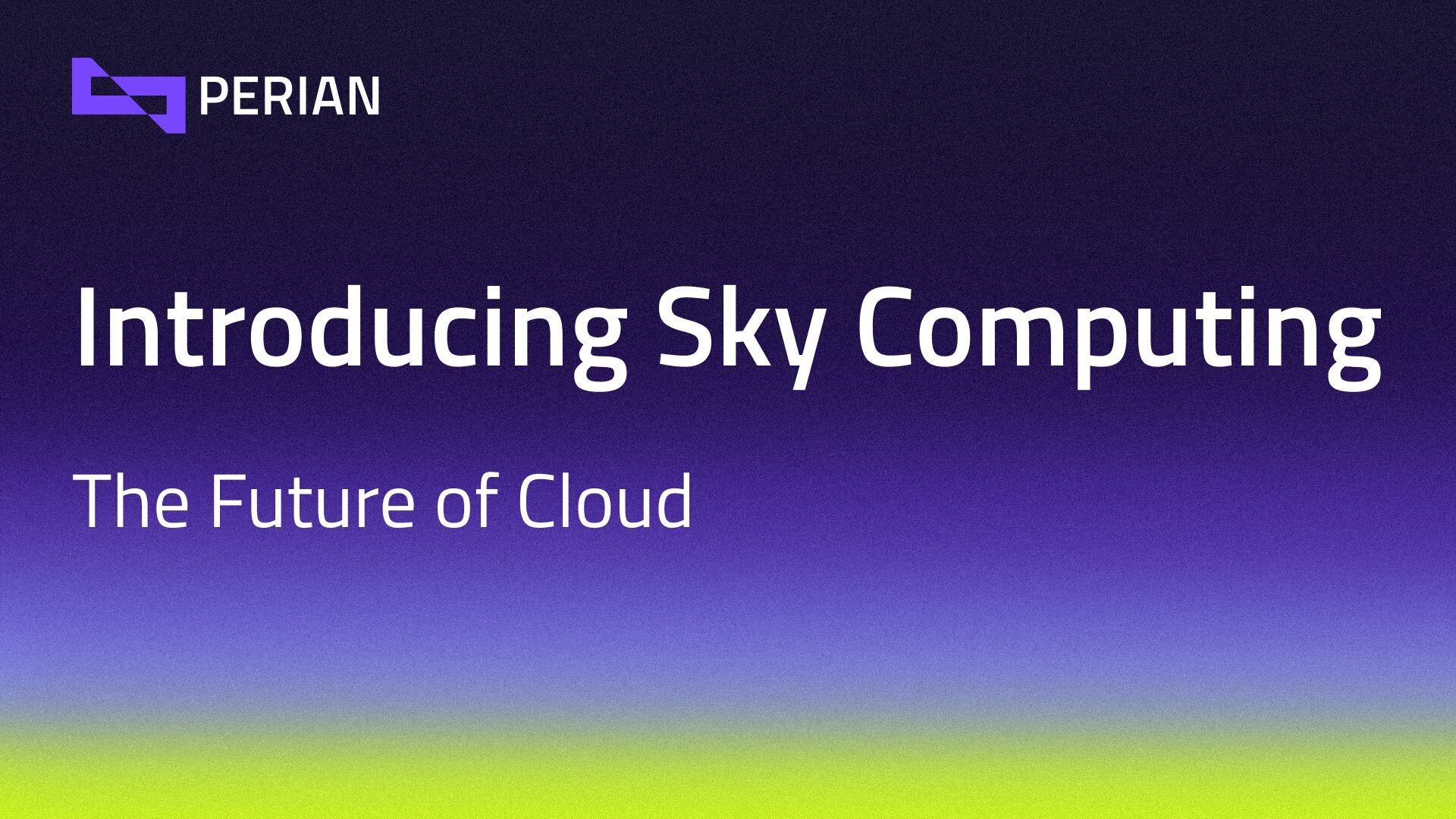
The world of cloud computing is evolving, and PERIAN is at the forefront of this transformation with Sky Computing. Cloud Computing revolutionized the way we operate, offering scalable, on-demand access to computing resources. But as the industry grows, so do its challenges—rising costs, inefficiencies, and difficulty of moving workloads between providers. Sky Computing offers a unified, interoperable layer above traditional cloud platforms that allows organizations to leverage the best of multiple cloud providers without the constraints. But what exactly is Sky Computing, and why should your business care?
The Evolution from Cloud to Sky Computing
Cloud computing has come a long way since its early days, evolving into a highly competitive market dominated by major players such as AWS, Microsoft Azure, and Google Cloud. Each provider offers a suite of proprietary services that create silos between cloud environments, making it difficult for businesses to move workloads between clouds without incurring significant cost and effort. Applications often need to be refactored to suit the unique APIs and services offered by different clouds, limiting flexibility.
The current cloud market is fragmented. Providers offer differing services, pricing models vary widely, and moving workloads between clouds can be complex. Consider this: high-end GPUs often sit idle 20-50% of the time, and prices for the same H100 GPU fluctuate from €1.2 to €18 per hour across providers. That's a significant inefficiency!
What is Sky Computing?
Sky Computing is taking the concept of multi-cloud to new heights. Imagine a "cloud of clouds"—a unified, interoperable infrastructure that connects the services of various cloud providers, all under one cohesive system. Sky Computing allows businesses to manage and optimize resources across different providers effortlessly, without being tied to any single vendor. It offers seamless interoperability, so your applications can run on any cloud, anywhere in the world.
Researchers at UC Berkeley envision a future where the cloud behaves more like a public utility, but on a global scale. In this future, cloud services would become more like commodities: highly interoperable and easily interchangeable between providers.
Sky computing is based on three key layers that mirror the principles behind the success of the Internet:
- Compatibility Layer: Abstracts away technical differences between cloud platforms, much like how the Internet uses the IP layer to mask differences between networking technologies.
- Intercloud Layer: Routes workloads across clouds automatically based on cost, performance, and availability, similar to how BGP manages traffic across the Internet.
- Peering Layer: Enables free and fast data movement between clouds, reducing “data gravity,” or the difficulty of moving workloads due to high transfer costs.
Sky Provider
The Sky Computing model is also paving the way for a new category of service providers called Sky Providers. PERIAN is one of the first Sky Providers to put Sky Computing into practice. Sky Providers act as intermediaries between businesses and traditional cloud providers, managing the inter-cloud layer and ensuring that data and workloads are routed to the most efficient providers based on specific business needs. Much like the internet, where routers and ISPs collaborate to make independent networks function as one, Sky Providers manage the connections between various cloud platforms and therefore enable interoperability. Unrestricted by physical servers, databases, or conventional IT frameworks, Sky Providers act as a smart connector. It's all about getting the best out of every cloud service without being tied to just one.
Key tasks of a Sky Provider:
- Unification: Harmonizing technical differences for multi-cloud compatibility.
- Interoperability: Applications running on any cloud based on specific requirements.
- Abstraction: Simplifying cloud services for ease of use and efficient resource management.
What are the benefits of Sky Computing?
Sky Computing creates a virtual layer above traditional cloud providers, abstracting away the complexities of individual platforms. Just as the internet connects different networks, Sky Computing connects clouds, providing critical advantages for high tech software companies:
1. Simplification: Managing a multi-cloud environment can be complex, requiring custom solutions for each provider. Sky Computing simplifies this by offering a unified management layer that automates infrastructure tasks. With built-in automation, companies can easily access a wide range of cloud services and hardware configurations, drastically reducing the time spent on infrastructure management.
2. Best Value Optimization: Sky Computing allows companies to optimize for performance, cost, and reliability by dynamically selecting the most suitable resources across different cloud providers. This means businesses can get the best suited cloud configurations for each use case or the best geographical performance, while always being compliant. With Sky Computing, the transition between cloud services is seamless, ensuring that workloads run in the most optimal environment without the need for manual intervention.
3. Best-of-Breed Services: In today’s multi-cloud world, no single provider offers the best solution for every use case. Sky Computing empowers businesses to use specialized services from various cloud providers together, creating a customized cloud stack. This could mean using Google’s AI tools alongside Oracle’s database services and Microsoft’s analytics, all managed through a single interface.
4. Cost and Performance Efficiency: By allowing businesses to compare offerings and prices from different providers, Sky Computing promotes competition and transparency in the cloud market. This results in better pricing and performance for consumers. Additionally, with the flexibility to move workloads between providers, businesses are no longer dependent on a single vendor, enhancing both performance and cost efficiency.
Sky Computing: The Future of Cloud
As cloud services become more interconnected and commoditized, the industry will see stronger competition, driving down prices and improving performance. The cloud will become easier to use, with more transparent pricing and greater flexibility, allowing businesses to focus on what truly matters: innovation and growth.
Want to experience the movement first-hand? Book your demo today and see how PERIAN can help you reach new heights.